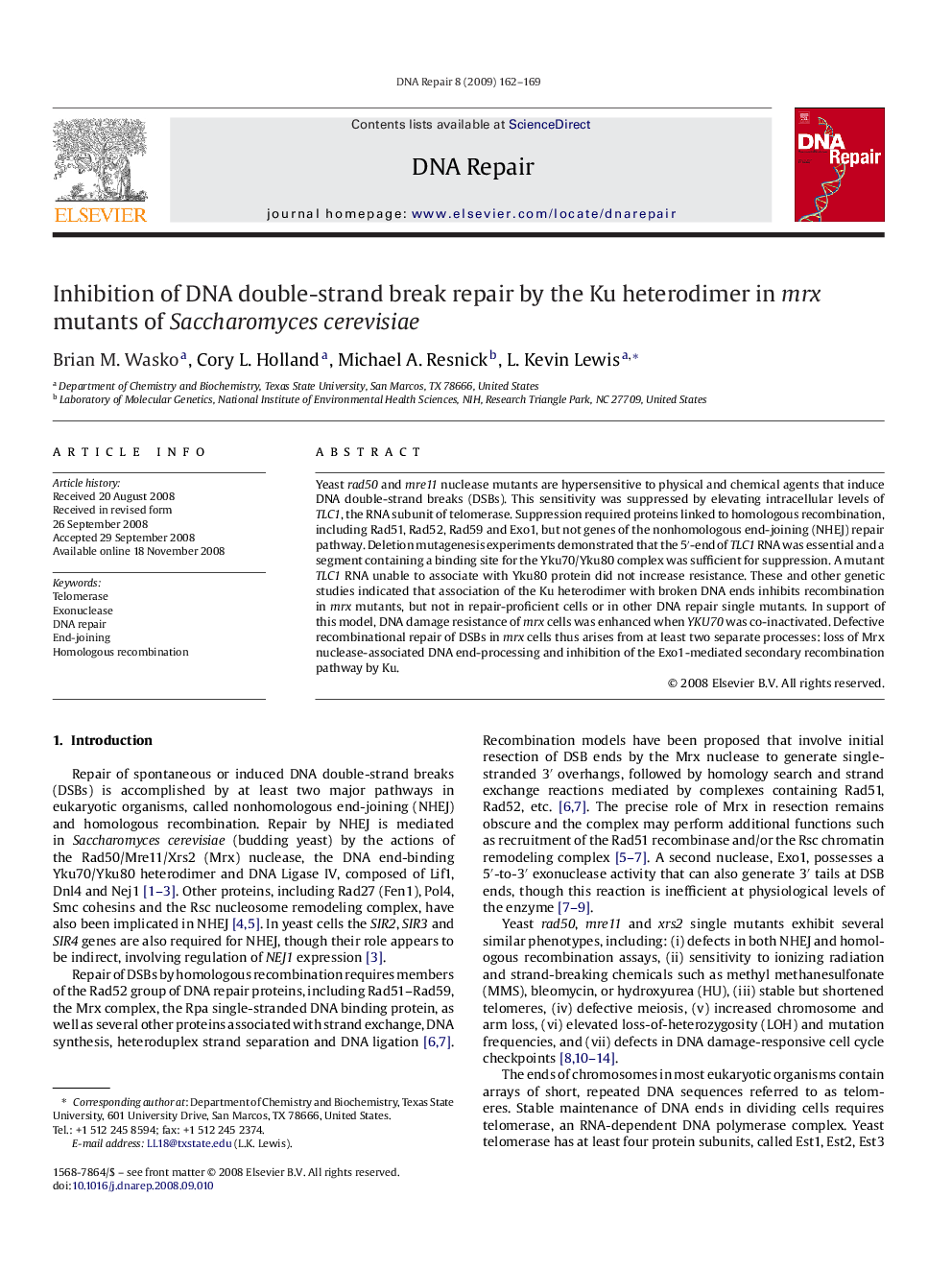| Article ID | Journal | Published Year | Pages | File Type |
|---|---|---|---|---|
| 1980751 | DNA Repair | 2009 | 8 Pages |
Yeast rad50 and mre11 nuclease mutants are hypersensitive to physical and chemical agents that induce DNA double-strand breaks (DSBs). This sensitivity was suppressed by elevating intracellular levels of TLC1, the RNA subunit of telomerase. Suppression required proteins linked to homologous recombination, including Rad51, Rad52, Rad59 and Exo1, but not genes of the nonhomologous end-joining (NHEJ) repair pathway. Deletion mutagenesis experiments demonstrated that the 5′-end of TLC1 RNA was essential and a segment containing a binding site for the Yku70/Yku80 complex was sufficient for suppression. A mutant TLC1 RNA unable to associate with Yku80 protein did not increase resistance. These and other genetic studies indicated that association of the Ku heterodimer with broken DNA ends inhibits recombination in mrx mutants, but not in repair-proficient cells or in other DNA repair single mutants. In support of this model, DNA damage resistance of mrx cells was enhanced when YKU70 was co-inactivated. Defective recombinational repair of DSBs in mrx cells thus arises from at least two separate processes: loss of Mrx nuclease-associated DNA end-processing and inhibition of the Exo1-mediated secondary recombination pathway by Ku.
